“Equity is the new growth strategy,” PolicyLink CEO Angela Glover Blackwell likes to say these days. A new report from her organization argues that the economy of New York’s Long Island would have been $24 billion stronger in 2014 alone if racial gaps in income were eliminated.
That’s $24 billion in foregone spending, investment and tax revenues in Long Island’s two counties, Nassau and Suffolk, due to longstanding inequality, coupled with policies ignoring history. That’s $24 billion left on the table in just one year, and it’s an annual loss that will only get larger every year, if nothing is done to address persistent racial inequalities.
The status quo is no accident. It was quite deliberate. Long Island’s famous Levittown and other post-WWII suburbs were considered archetypes of the placid, suburban, picket-fence community, but developers sold homes in those places explicitly to white families only. Meanwhile, the limited number of black families allowed to move out into Long Island were actively pushed or steered to specific areas out of sight of white communities, and out of reach of white communities’ high-quality public schools, parks and other amenities.
The data show that black families moving to Long Island still end up in the same historically black neighborhoods, whether by choice or by continued racial steering (outlawed by the 1968 Fair Housing Act).
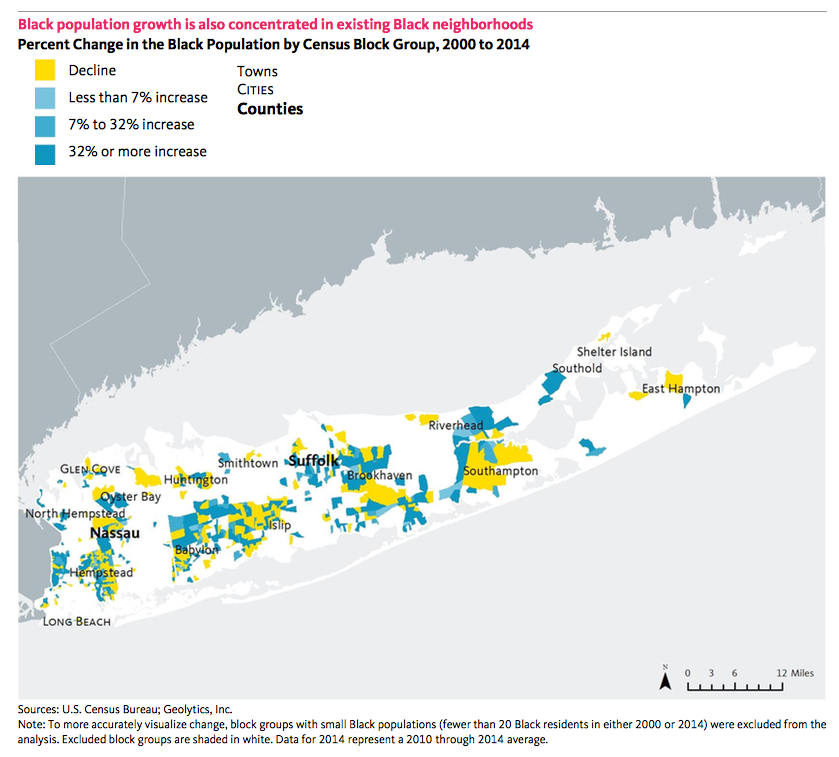
Today, 1 in 3 Long Islanders is a person of color — up from roughly 1 in 10 residents in 1980. If today’s ratio holds — according to the report black Long Islanders are three times as likely as white residents to live below poverty on Long Island — it doesn’t bode well for the region’s economy. By 2050, the report points to estimates that nearly 2 in 3 Long Islanders will be people of color. Unless things change, people of color will be moving into Long Island communities where policies and institutions were designed explicitly to ignore or undermine them, as shown by the data on how Long Islanders of color are doing today.
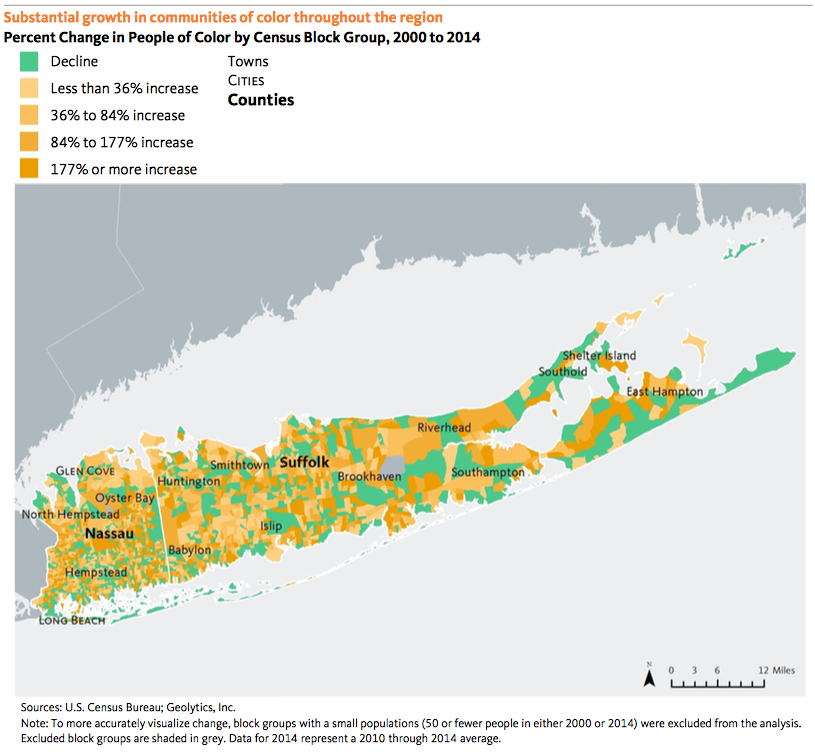
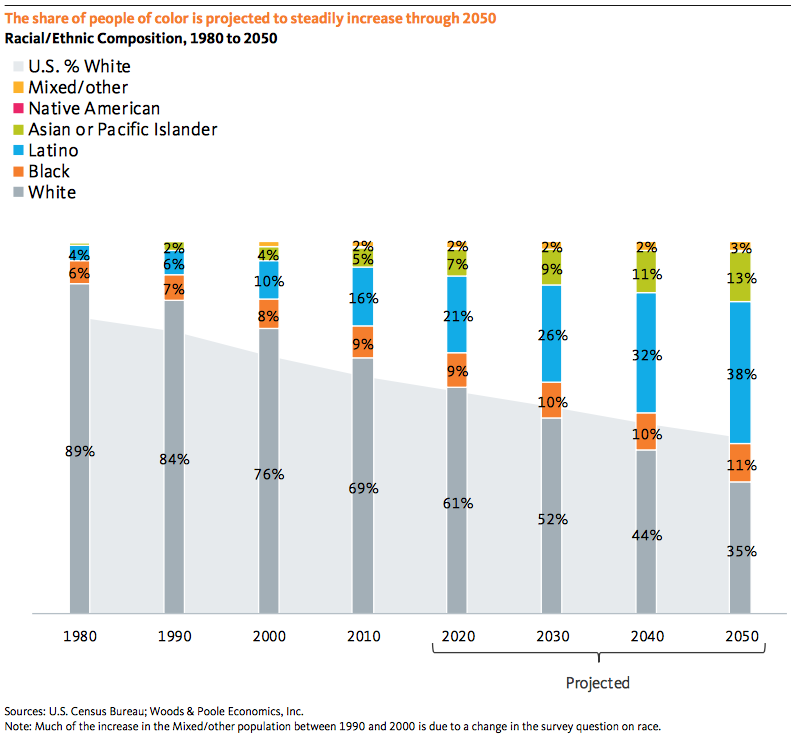
The report draws insights from 14 demographic indicators, 33 economic vitality indicators, 23 readiness indicators, 16 connectedness indicators and four economic benefits indicators.
Looking at one very interesting demographic trend, the report found that from 2000 to 2014 the net growth of black Long Islanders was being driven by foreign-born individuals, while the net growth of Latino Long Islanders was driven more by U.S.-born individuals.
On economic vitality, the report found that higher education was not much of an equalizer. On average, college-educated white Long Islanders earned $8 an hour more than college-educated black Long Islanders.
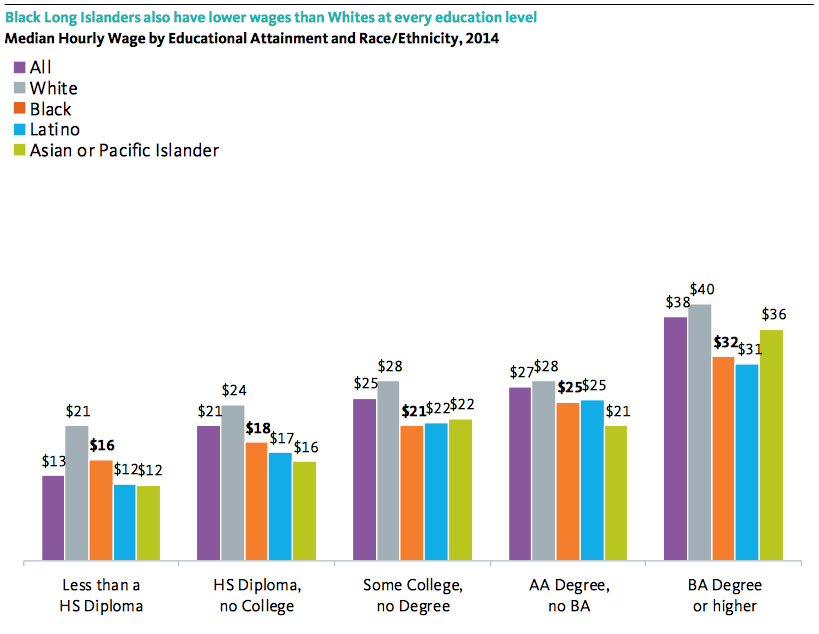
Black Long Islanders also had the highest unemployment rate, regardless of education level.
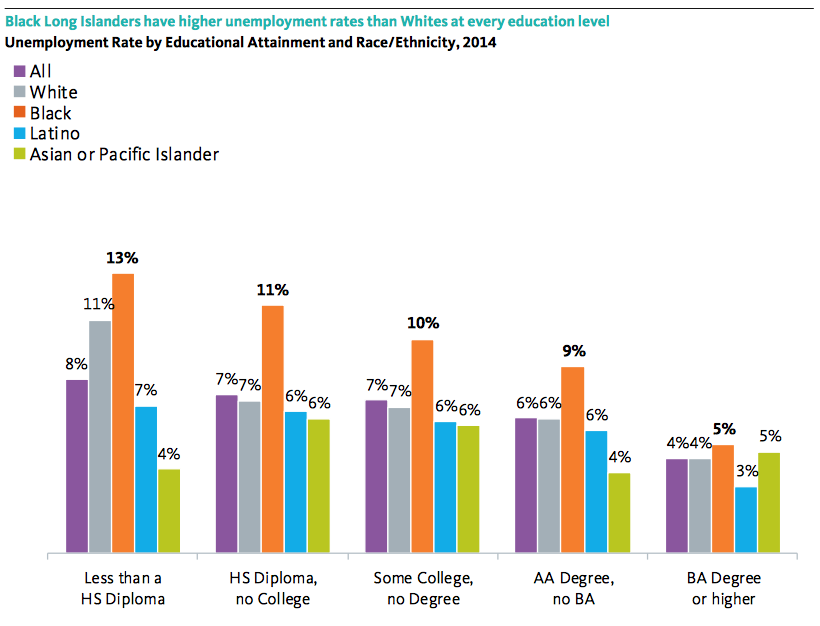
Unemployment also exhibited a racial pattern, showing up particularly high in predominantly black communities.
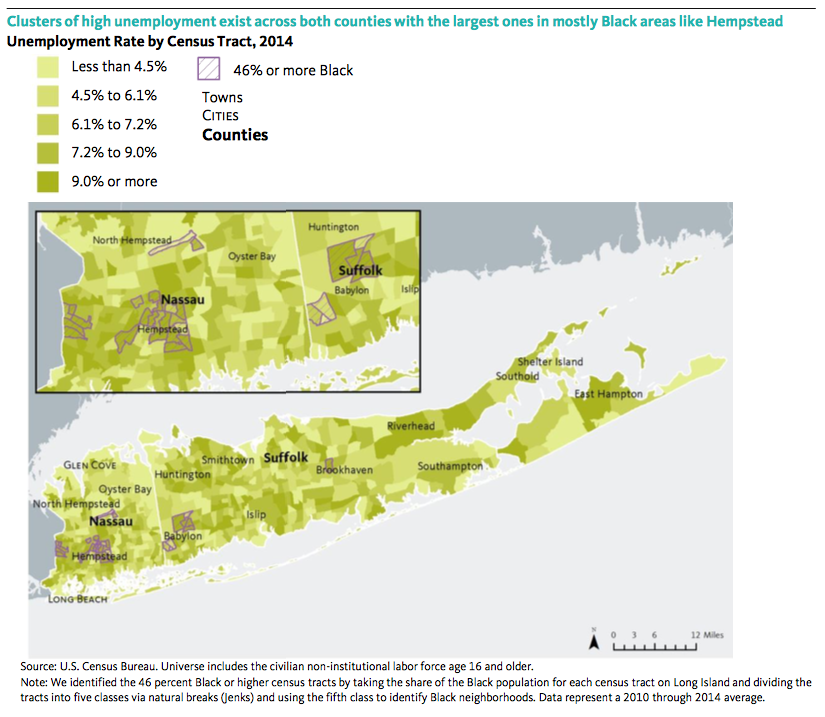
But the overall wage growth masks another pattern: From 2000 to 2014, the median wages grew for every racial group on Long Island except for black Long Islanders.
PolicyLink also released a policy brief accompanying the report, with recommendations on how to advance equitable growth on Long Island. The recommendations cover building community power and voice, cultivating homegrown talent through a strong cradle-to-career pipeline, and creating sustainable neighborhoods for all, with positive examples from other regions across the country.
This article is part of The Bottom Line, a series exploring scalable solutions for problems related to affordability, inclusive economic growth and access to capital. Click here to subscribe to our Bottom Line newsletter.

Oscar is Next City's senior economic justice correspondent. He previously served as Next City’s editor from 2018-2019, and was a Next City Equitable Cities Fellow from 2015-2016. Since 2011, Oscar has covered community development finance, community banking, impact investing, economic development, housing and more for media outlets such as Shelterforce, B Magazine, Impact Alpha and Fast Company.
Follow Oscar .(JavaScript must be enabled to view this email address)


















